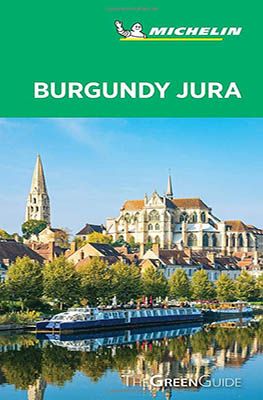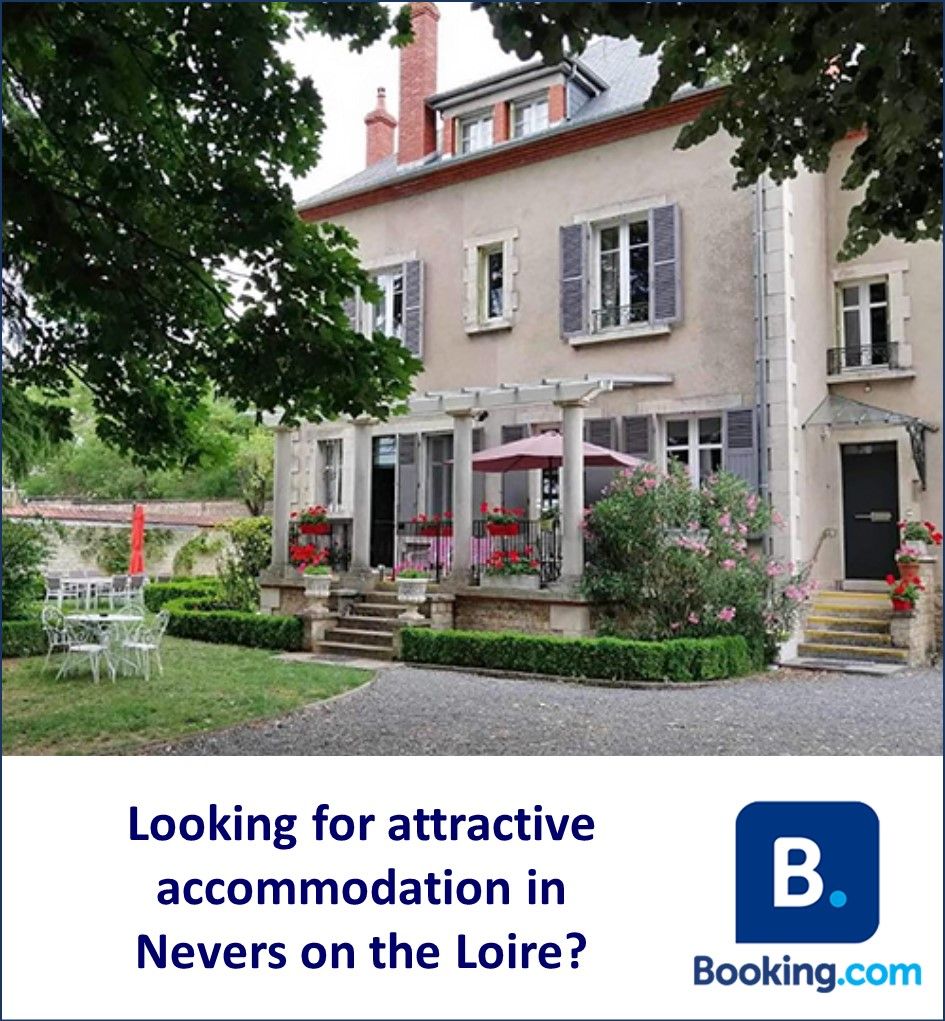Earlier this year, we visited south-western Burgundy. Here, we cycled part of the “Loire à Vélo“, one of France’s best-known and most popular long-distance cycling routes. What we loved about our cycling tour is that you visit many wine regions and some particularly picturesque towns. One of these is the charming city of Nevers, also known as the “Burgundian city of dukes”. The city is less well known than cities like Dijon and Beaune. Yet Nevers on the Loire has at least as much to offer. For instance, the city has a rich historical heritage, fascinating museums, beautiful nature, delicious food and the finest wines. For us, reason enough to definitely return there!
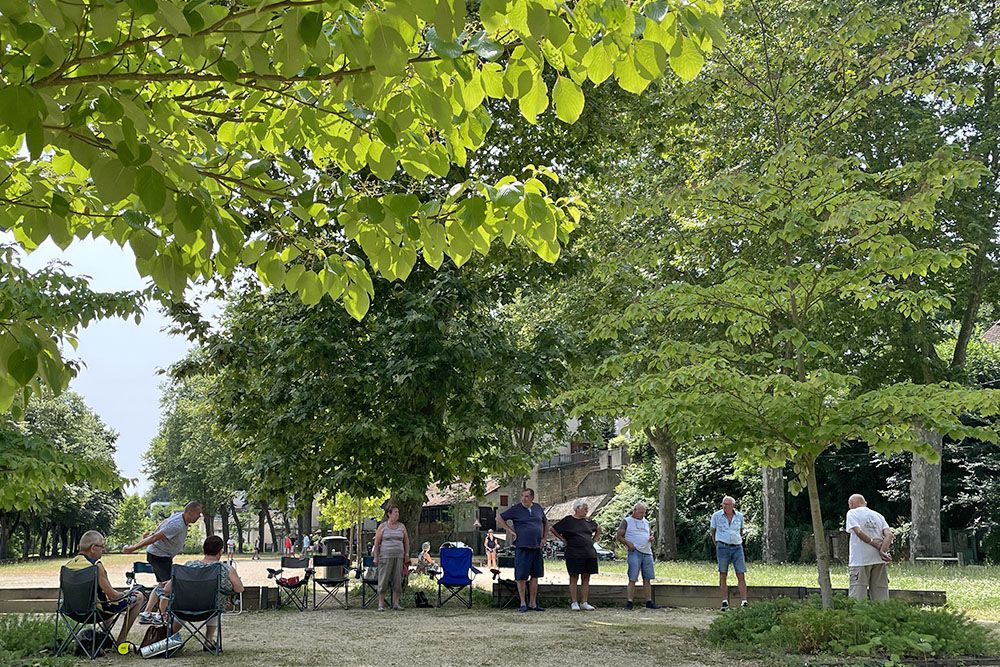
Brief history of Nevers
Nevers has a history dating back to ancient times when it was inhabited by the Celts. Thanks to its strategic location on the banks of the Loire, Nevers grew into an important centre for trade and politics during the Gallo-Roman period. In the Middle Ages, Nevers had an eventful history. It came under the rule of several rulers, including the Burgundian Empire.
During the Renaissance, Nevers grew into an important cultural centre. The city was the residence of the Gonzaga princely family, which brought important works of art and architectural masterpieces to the city. The magnificent Palais Ducal is an impressive example of Renaissance architecture. Once, this palace served as the summer residence for the Dukes of Nevers.
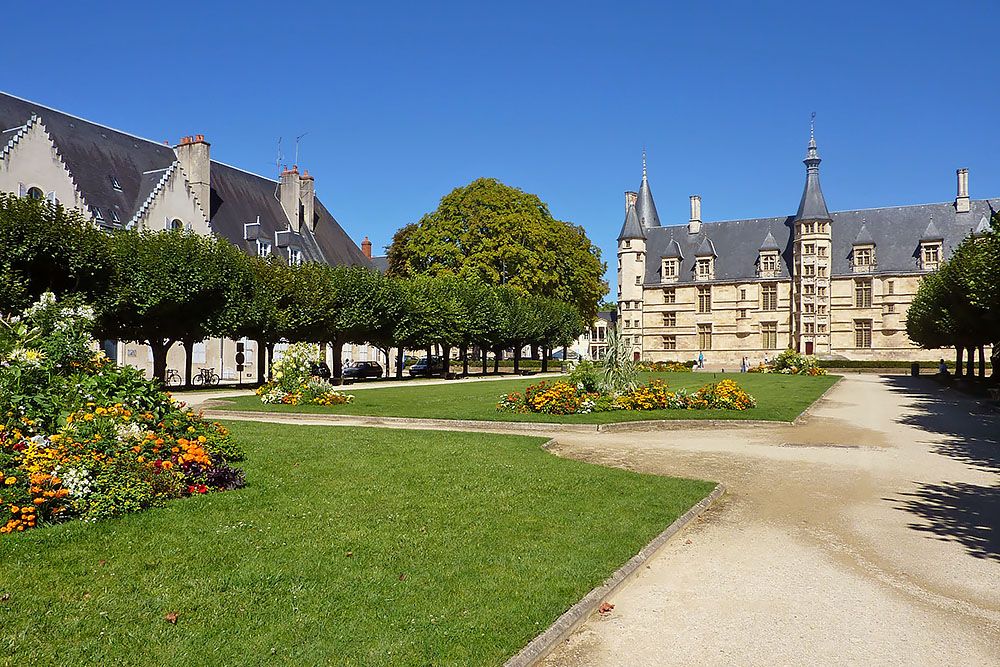
Since the 20th century, Nevers has also been a place of pilgrimage. Pilgrims visit the city to see the perfectly preserved body of Bernadette Soubirous from Lourdes. Bernadette witnessed several Marian apparitions after which she moved to Nevers. Here she entered the convent of Saint Gildard. Bernadette died there and was buried in Nevers.
Today, Nevers is a charming city that proudly embraces its rich history. The historic centre still exudes the atmosphere of days gone by, with cobbled streets, old half-timbered houses and imposing churches. Nevers is also known for its pottery production and has a lively cultural life with many festivals and events.
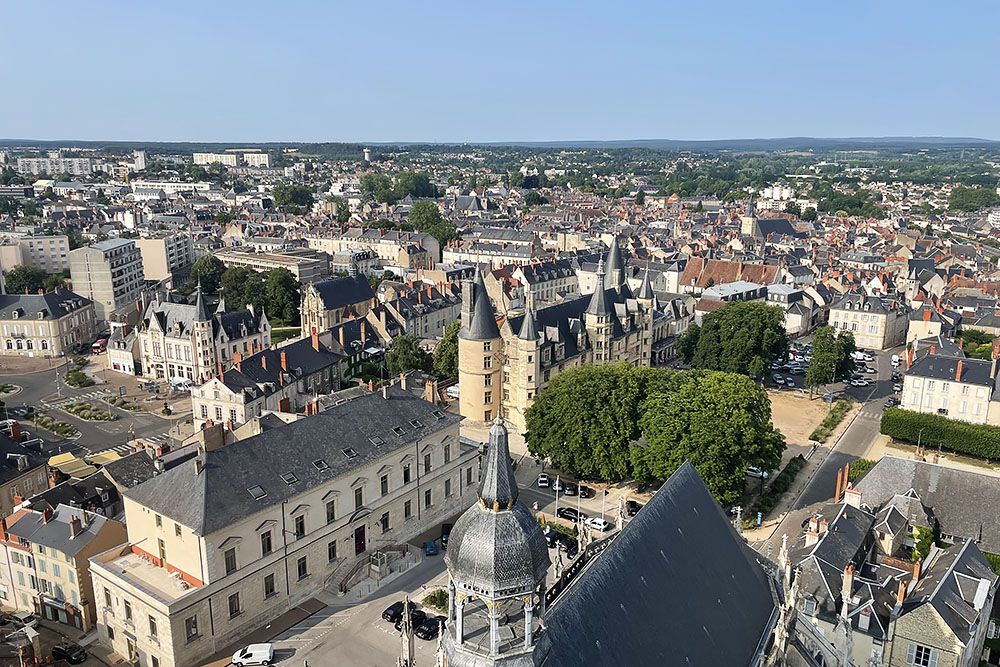
Sights of Nevers not to be missed
Nevers’ tourist office has made it easy for us visitors to discover the city on foot. In fact, a “fil bleu” (a blue line) runs through the city. If you follow this line along the pavement you will pass many (historical) sights. There are two walking loops you can follow:
Route “Saint-Martin – Saint-Étienne”
This route takes you past many stately buildings and beautiful old churches in the north-eastern part of the old town. One of the sights along the route is the Palais Ducal, the Ducal Palace. This 15th-century palace was the residence of the counts and dukes of Nevers in the 15th and 16th centuries. It is considered the first real castle on the Loire. The architecture is an enchanting mix of Renaissance elements with dormers, decorative chimneys and a central spiral staircase you can see from the front. The Palais Ducal is now Nevers’ town hall. You’ll find the tourist office, some exhibition rooms and a permanent exhibition on Nevers: its history and what else the city has to offer.
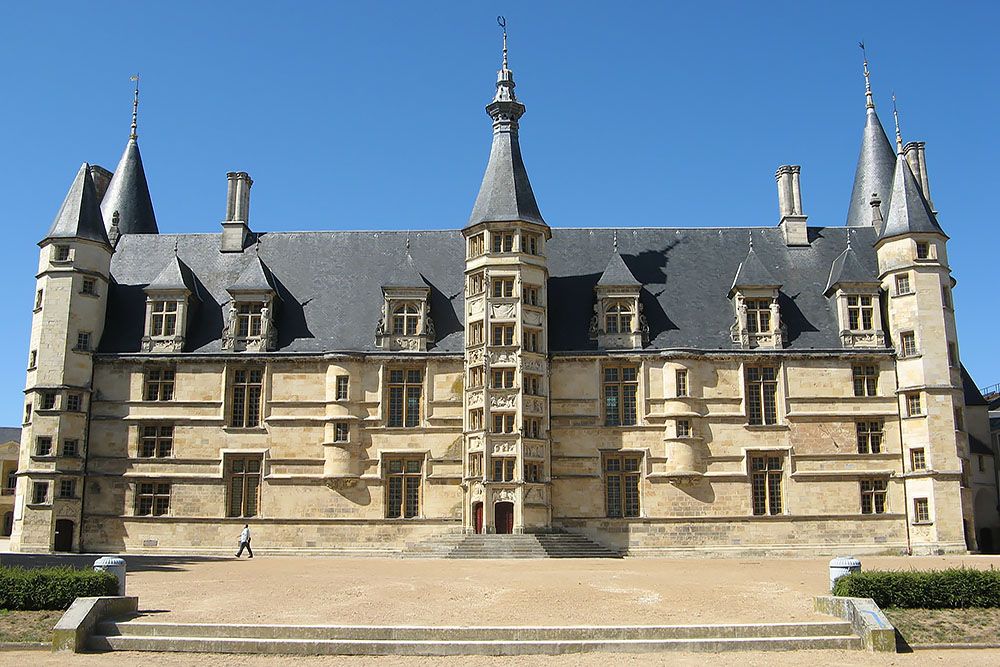
In this part of the city, you can never cease to be amazed by unusual, sometimes extravagant historical buildings. A fine example is the 17th-century Sainte-Marie chapel, a small church in an exuberant, Italian Baroque style. Another unusual church is Saint-Pierre. On the outside, Saint-Pierre looks a bit more austere, but the beautiful frescos definitely deserve a visit.
A little further along the route is Saint-Étienne. The special thing about this 11th-century church is that it has hardly changed over the centuries. The Romanesque architecture is sober and there is not much sculpture or ornamentation. Still, don’t skip this church on your city walk. If only because of the stunning extent to which the pure structure has managed to stand the test of time.
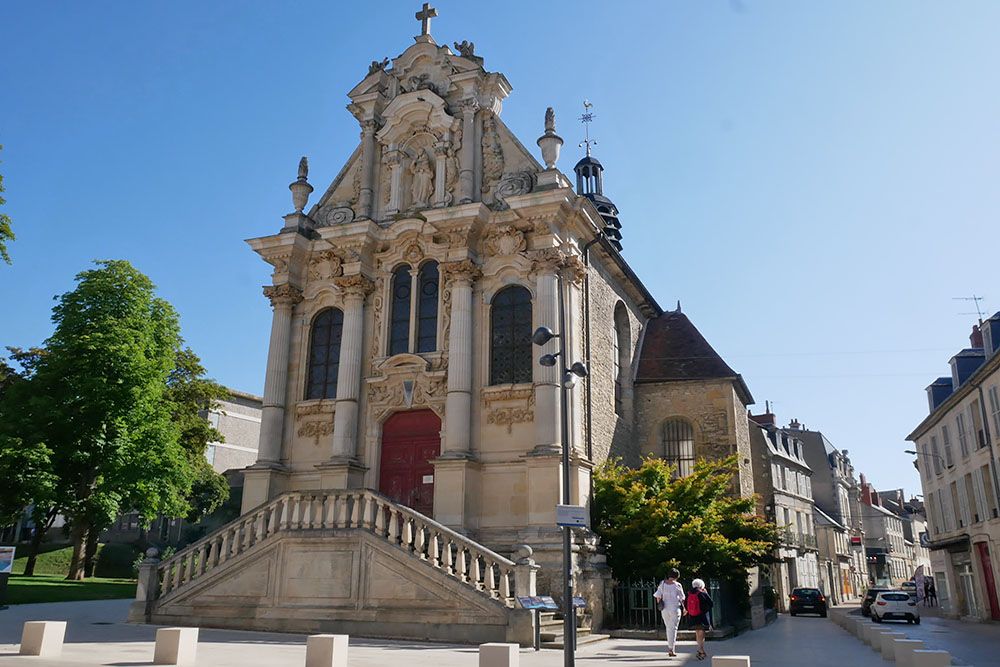
Route “Les faïenciers”
The second walking loop of the “fil bleu” takes you past the cathedral and the Loire, among other places. You also pass through the old quarter where faience (tin-glazed pottery) was produced centuries ago. Nevers was a major producer of the prestigious faience from the late 16th century to the early 19th century. In Nevers, you still have some producers of faience. You also have an interesting museum in this district, the Musée de la Faïence et des Beaux Arts. The museum is located in a former Benedictine monastery and a stately 19th-century mansion.
The absolute highlight of Nevers is the cathedral of Saint-Cyr-et-Sainte-Julitte. A UNESCO World Heritage Site since 1975, the church has something unique about it. Namely, it has two opposing choirs, one in Romanesque and one in Gothic style. Construction of the cathedral began in the early 11th century. It was not until the 16th century that the structure was completed. Since then, the cathedral has undergone several restorations. Especially after the end of World War II, to repair the severe damage caused by a bombing in 1944. In the 16th century, the 52-metre-high Tour Boyer was added to the cathedral. No fewer than 285 spiral staircases lead to the top. The magnificent view of the medieval city and the meandering Loire will make you quickly forget the perhaps tiring climb.
Beklimming van de Tour BohierTo climb the cathedral tower, the association “Regards sur la Cathédrale“ organises free visits on some days of the week in high season. For this, you can register at the information desk in the cathedral. The city of Nevers also organises guided tours of the cathedral in high season, during which the tower can be climbed. For more information on guided tours, contact the Nevers Tourist Office at contact@nevers-tourisme.com. |
The route further follows along a small part of the Promenade des Remparts: a path along the original city walls. The city wall was built in the 12th century to defend the abbey. The path runs through a park from the Porte du Croux (a former tower gate with drawbridge) all the way to the bank of the Loire. Incidentally, the tower gate dates from the 14th century. The gatehouse houses the archaeological museum of Nièvre.
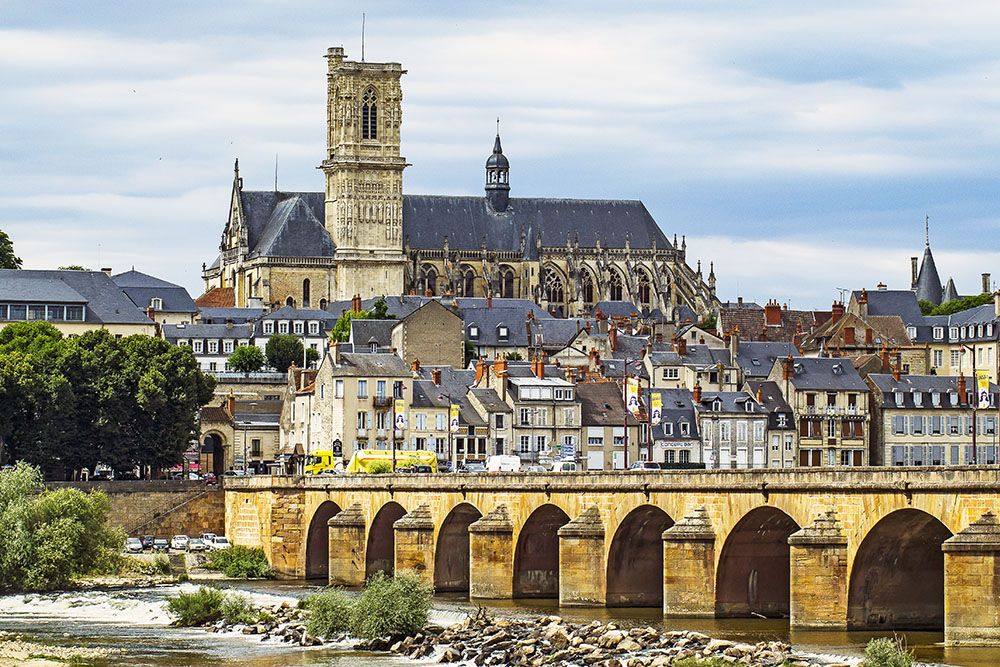
Espace Bernadette
During the blue line city walk, you will pass many interesting sights. But there are other places just off the route that are also definitely worth a visit. The most important of these is Espace Bernadette, the former convent of Saint-Gildard. In the chapel, you will find the miraculously well-preserved body of Bernadette Soubirous from Lourdes in a glass shrine. There is also a museum dedicated to Bernadette there. And you have a reconstruction of the grotto of Massabielle, where 14-year-old Bernadette witnessed 18 Marian apparitions. Around 400,000 pilgrims visit the chapel with its glass shrine every year.
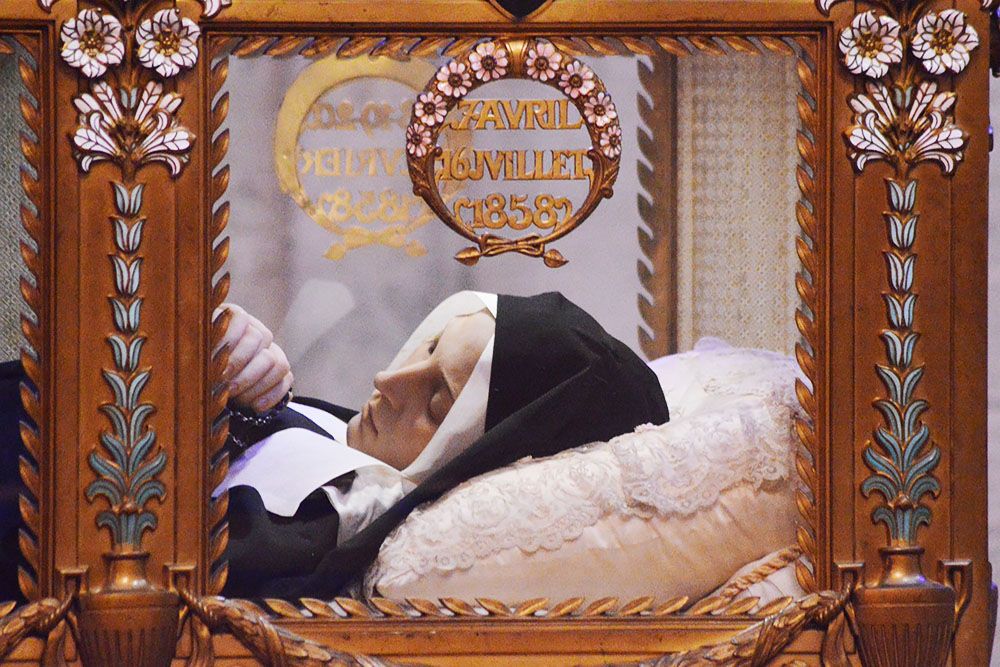
Nevers on the Loire
Picturesque, medieval Nevers is idyllically situated on the “Fleuve Royal”: the Loire’s royal nickname. In the past, the river was used to transport faïence pottery. Today, the Loire is mainly a paradise for fishermen and outdoor and nature lovers. The river’s rugged, natural and wooded banks lend themselves perfectly to the most beautiful cycling and hiking tours. Not for nothing is the “Loire à Vélo” one of the best known and most popular cycling routes in the whole of France. Besides this famous long-distance cycle route, near Nevers you have the “Voie Verte”: a beautiful 13-kilometre-long cycle path on a former towpath. The route passes through beautiful green surroundings.
Walkers will particularly enjoy the unique landscape of the Bec d’Allier. In this Natura 2000 site, the river Allier flows into the Loire. It is a beautiful, pure and wild nature reserve near the Pont Canal du Guétin. Incidentally, the immediate area is also the official starting point of the Loire à Vélo.
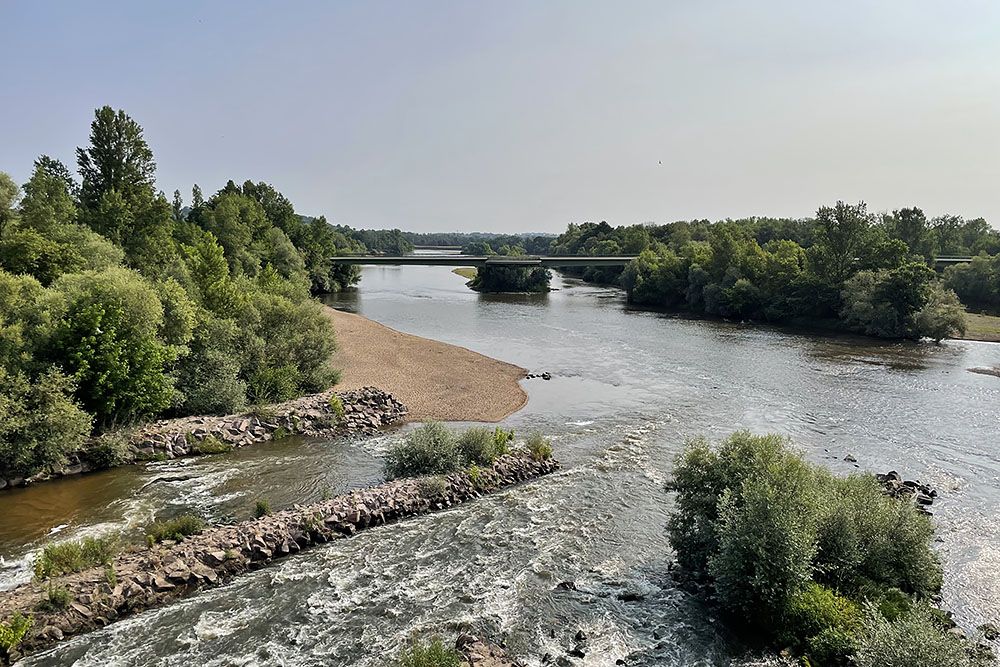
Would you like to experience the impressive nature by the Loire in another unique way? Then take a canoe trip in perfect tranquillity. We did so accompanied by a guide. He showed us the most beautiful spots during the two-hour trip to the Bec d’Allier. He also knew a lot about the special flora and fauna. We thought this was one of the absolute highlights of our visit to this part of Burgundy!
By the way, you can also explore the river landscape on your own by canoe. Canoe Raid Aventure rents out canoes for one or more days. Of course, they also arrange transport back so you don’t have to paddle upstream. And are you feeling adventurous? Then go wild camping on the banks of the river. It is one of the few places in France where this is allowed!
We visited Nevers at the invitation of Burgundy Tourism. We compiled the content of the blog independently and objectively based on our own impressions
Frequently asked questions about Nevers, the Burgundian city on the Loire river
Nevers is located in the western part of Burgundy, on the Loire. The city is the capital of the Nièvre department in the Bourgogne-Franche-Comté region.
Nevers is easy to reach by train. Travel to Nevers via Bercy station in Paris. Want to cycle in the area with your own bike? Then car is the best option.
Spring and autumn lend themselves best to a city trip to Nevers. August is a busy and therefore expensive month to travel in France.
When it comes to culinary delights, Nevers is also the place to be. Burgundy is famous for its wine. Nevers therefore has a number of excellent wine bars and restaurants where you can enjoy local specialities and fine wines. The menu includes beef dishes. These are mainly from Charolais cattle, a breed of cattle that originated in the region. In Nevers, this is often served as steak tartare. You will also find fish dishes on the menu. The fish comes straight from the Loire.
Culinary delights in Nevers can be enjoyed almost anywhere. Our tip: we had a lovely dinner in the garden of Le Bengy. Like Jean-Michel Couron, this restaurant has a mention in Michelin Guide but is really friendly priced!
There are plenty of accommodation options available. From charming bed & breakfasts and cosy inns to luxury hotels and holiday homes, there is something for everyone. There are also "accueil vélo" accommodations that offer extensive facilities especially for cyclists cycling the Loire à Vélo. Such as luggage service or a workshop to make minor repairs.
We ourselves stayed at the beautifully located La Croix de Vernuche, a particularly idyllic hotel just outside Nevers. Views from the hotel room were stunning. But we were particularly fond of the carefully prepared breakfast at the garden table. Other accommodation in Nevers and immediate surroundings.

